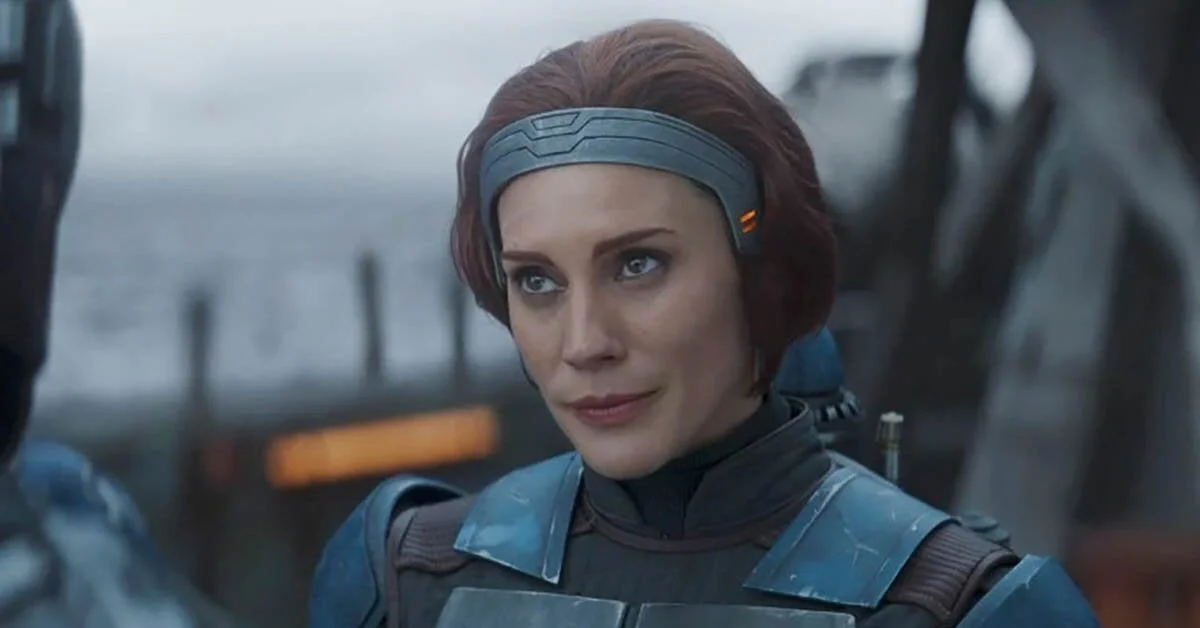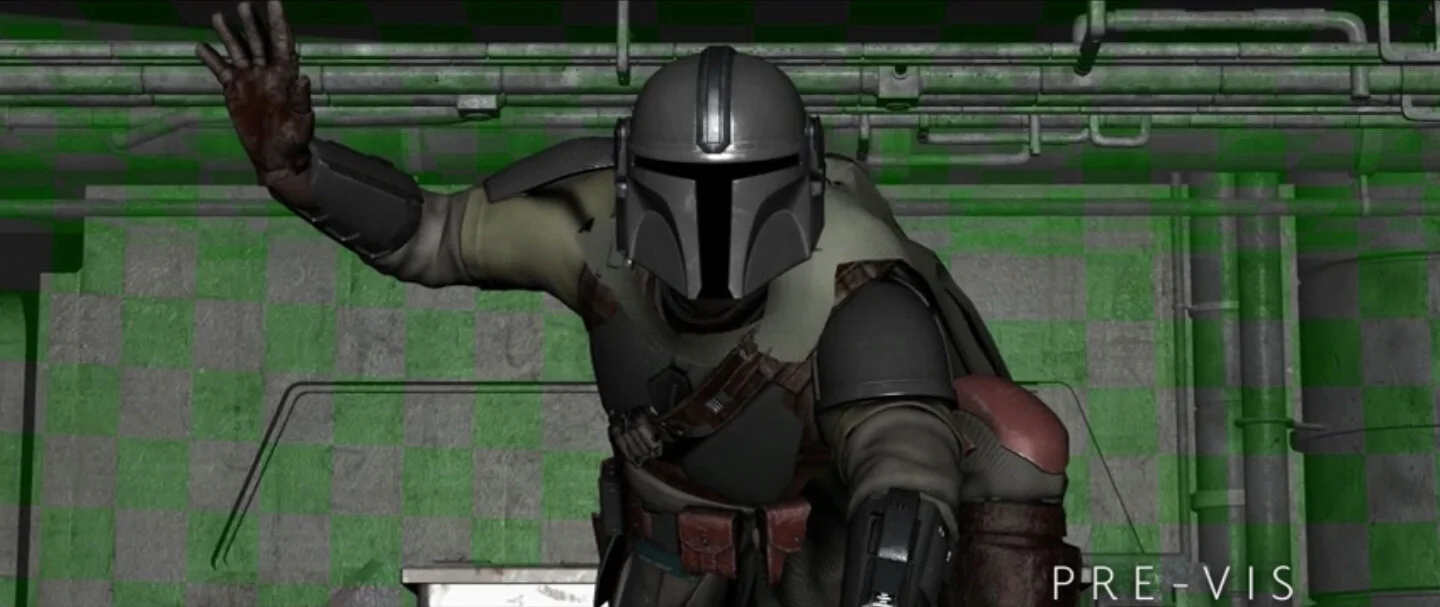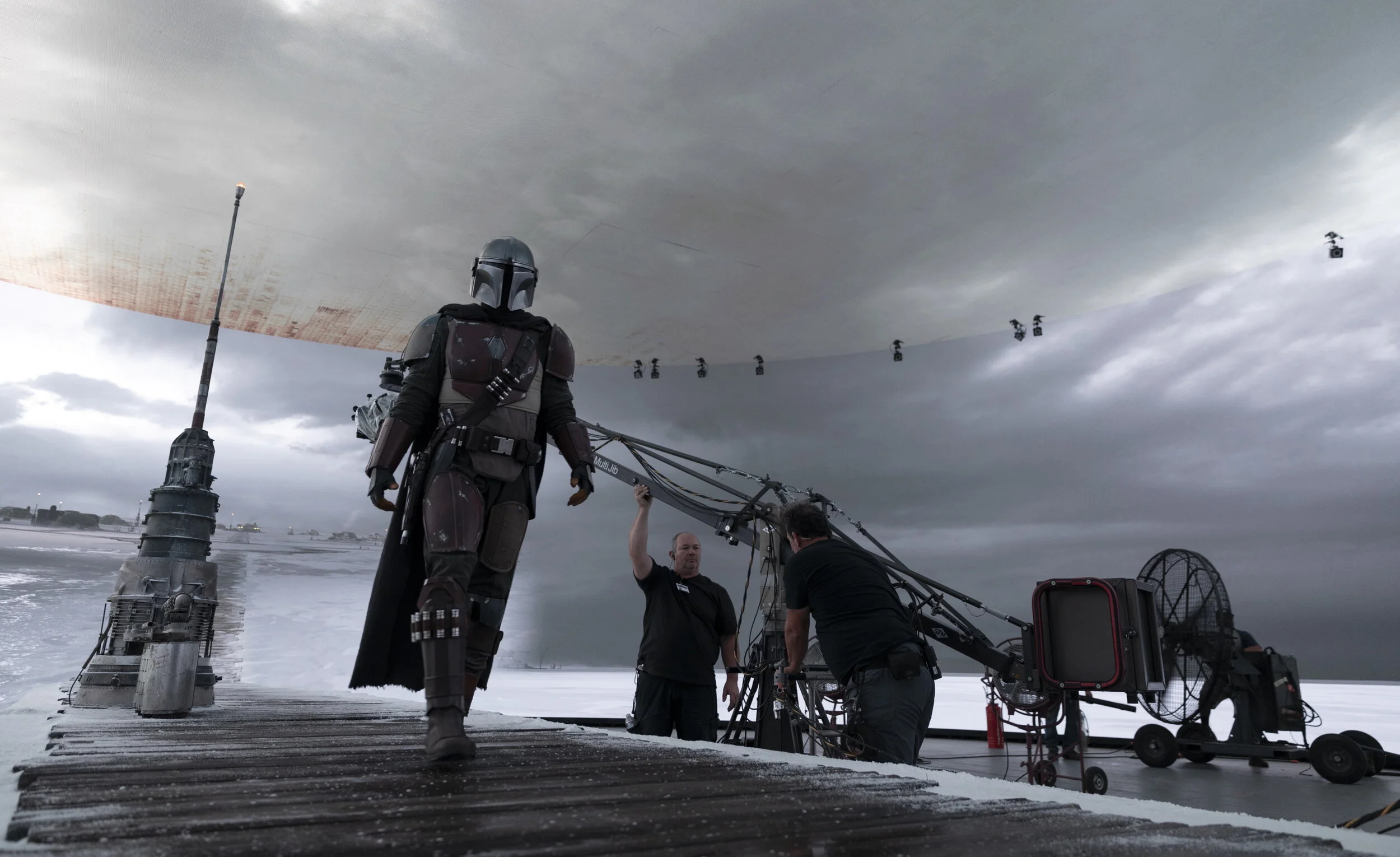Bryce Dallas Howard on Directing in “The Mandalorian”
It’s the second season for Bryce as a director on The Mandalorian and for her, every day still “feels like I won the lottery.” This week, after an extremely well received sophomore episode, we spoke with Bryce about the magic behind Baby Yoda’s cuteness, upholding the Star Wars legacy, and the technology that makes her geek out on set!
Questions have been edited and condensed for clarity. Potential spoilers below!
1. How did you approach introducing Bo-Katan, a pre-existing character with a long history, into live action?
When we see a character in live action, we want to understand their human-ness — their wants, needs, motivations, and emotional backstory. This is why highlighting the humanity of Bo-Katan became my number one priority. At her core, this character has a deep desire for justice, something many of us can relate to. The more I could bring that out — what drove her to pursue what she considered justice — the more an audience could connect. And then add an actor like Katee Sackhoff to play Bo-Katan and my job becomes ten thousand times easier!
Katee was a massive part of bringing this character to life, not only because she performed the voiceover for Bo-Katan for ten years, but she’s a passionate Star Wars fan and deeply understands Mandalorian culture. On set in real time she helped to sharpen the perspective of her character and bring specificity to her dialogue. A good amount of what Bo-Katan said Katee helped write! She was a wonderful asset in front of and behind the camera.
In terms of the character’s history, there’s no running from the legacy and the lore in Star Wars, so conversations with Dave Filoni, who created the original animated character, were instrumental to bringing Bo-Katan into live action. He answered any and every question I had (of which there were many). I could sense the love he had for this character and am honored that he trusted me to be a part of the team that brought Bo-Katan to the live action form!
Question from Ben D. and Kate L.
2. Which piece of emerging technology were you most excited to work with?
The folks behind The Mandalorian are raising the bar in how technology is integrated into the filmmaking process — there’s truly so much to be excited about, but what’s coming to mind is Pre-Vis (short for previsualization).
Pre-Vis is exactly what it sounds like: it’s the visualization of complex scenes (or in our case, an entire episode) before filming. This process allows us to essentially shoot the episode before even stepping on set! We’ll use Unreal Engine and virtual reality as a playground to test out blocking and camera angles early on, so we’re that much more prepared on the day of shooting. Pre-Vis is also wonderful because it gets all the departments collaborating from the start. Filmmaking can often fall into a strict and separated hierarchy in order to push production forward, which strips us of the chance to exchange ideas. With Pre-Vis, a process that requires everyone to jump in with thoughts and suggestions early on, we’re able to discover something new and push the episodes even further!
But I can’t go without mentioning the volume and all the ways it absolutely blows my mind! The volume gives us the ability to create dynamic sets that adjust in real time and achieve such detail and quality in the image (so much so that even on set, I have a hard time distinguishing the practical set from the screen).
Also, if you’re like, “What’s this ‘volume’ thing that Bryce is talking about?”, check out this video, “The Virtual Production of Mandalorian Season One” from ILM (Industrial Light and Magic).
Question from Chlo and Tolly
3. How do you direct characters that are puppets like Baby Yoda and characters with masks like Mando, Frog Lady, and Mon Calamari?
For Baby Yoda, I get to work with a team of brilliant puppeteers who bring Baby to life. I’m a really animated director in terms of how I like to get on my feet and demonstrate moments physically, so while we’re shooting I’ll often use my own body language to communicate what I’d like Baby to do. The Baby Yoda team then translates those big human gestures into the tiny winks and soup slurps and waves that we love from the character.
The animatronics folks at Legacy Effects work with an *unbelievable* level of synchronicity. You would never guess that different people are operating different limbs and aspects of Baby with how seamlessly they work.
The "legacy" of Legacy Effects is deeply rooted in the makeup, puppets, and practical and digital effects practice of Stan Winston, an Academy Award-winning television and film special make-up effects creator. In fact, the co-founders of Legacy Effects once worked for the Stan Winston Studio.
After personally getting to know co-founder John Rosengrant through Jurassic World, I was over the moon to work with him and his team again on The Mandalorian. I can't hype them up enough, so if you want to learn more about who they are and their extraordinary work on The Mandalorian, click here.
For other characters in masks, those incredible performances are a testament to the actors and supporting artists! They have a deep understanding of the nuances in body language and how a slight turn, a subtle gesture, and even stillness can evoke so much emotion.
Take Misty Rosas for example who played Kuiil in season one and Frog Lady in season two. Some of the most profound and touching moments with those characters are thanks to Misty’s incredible talent for distilling such emotional depth into something as simple as a look or a touch. (Look at the way she holds Frog Man’s face!! I swoon.) We know we can’t rely on facial expressions to sell a moment, so my job as a director is to make everyone, actors and audience, hyper-aware of physical elements such as proximity, pace, scale that communicate thoughts and feelings.
Question from Phoenix M.
4. George Lucas looks to Samurai and Western films; what are your personal inspirations?
The creative influences in my work come from a variety of places. I was raised on Spielberg and Amblin movies. In fact, I said my first sentence while watching ET as a child (“ET fly”) and unbeknownst to me as a child, so many of my favorite movies were produced by Steven like The Land Before Time, The Goonies, Batteries Not Included — I could go on and on. Steven is just as prolific, if not even moreso, as a producer than a filmmaker. Whenever I think about my favorite films while growing up, his name is often on the credit sheet. In all his work — take any character in any circumstance — there is a sense of wonder, awe, and adventure, that makes it irresistible. Steven raised the bar for storytellers in so many ways. Watching his films trained our storytelling sensibilities, and I believe there is an inherent cinematic sophistication that we as an audience expect because of Steven’s influence.
My background in theater, specifically devised theater (a method of theatre-making in which the script originates from collaborative and often improvisatory work by an ensemble) is another major influence. After I left NYU to start working professionally in theater, I joined Theater Mitu, a theater company that explores material in a manner that is really quite wild, and exciting, and occasionally even groundbreaking.
For someone who is quite a rule follower, to do work that was consistently about breaking the rules and creating an experience that was WAY outside of the realm of expectation became something that I craved. There is courage involved in theater that I respect. Performance art takes guts, and I love anything with stakes that feel immediate and immersive and new. My efforts to create an elevated experience that blows the audience’s mind comes from my experimental theater days and has continued in my interest with emerging technology, which is all about pushing the boundaries of what is possible.
I wouldn’t feel genuine answering this question without acknowledging that a massive inspiration in my work definitely comes from growing up on film sets (getting a front row seat to my Dad’s process and taste) and the filmmakers I get to work with as an actor. To this day, I often spend time on set, even when I’m not filming, to learn from the directors I was being mentored by (without them even knowing it!). I have an excellent memory, great hearing, eavesdrop all the time, and really pay attention, so over the last almost forty years of being on the sets of people I admire, I’d like to think I’ve picked up a thing or two :)
Question from Draco S.
5. How did you incorporate your personal directing style and vision into a multi-directorial show?
I’d like to think my directing style is actor-focused and actor-friendly, which makes sense considering my other full-time career as an actor. For this reason, I can’t help but put the humanity, emotional logic, and journey of characters at the center of the storytelling experience. My entry point to every scene is typically motivated by the character's perspective, and I would say that this organizing principle informs every aspect of my process. For example, I’m specific in wanting a character’s intention to motivate the camera movements, versus the camera driving the story. I’m not afraid to do simple shots if it means emphasizing a significant emotional beat or shift for a character.
At the end of the day, what unites all the directors on The Mandalorian is a fundamental love for this universe, the stories and characters within it, and a deep reverence for not only what George Lucas created, but the influences that also shaped his work. The Star Wars galaxy is a great container with its own set of parameters, but just enough freedom to play and bring one’s sense of self through.
When working on a series with multiple directors it’s vital for there to be cohesion in the tone, visual language and storytelling across all episodes. What’s extraordinary is how we get there, as we are uniquely fortunate as directors. Jon Favreau encourages and empowers us to bring all of ourselves to the process and take a real sense of ownership over our vision for the episode early on, so there is plenty of time before filming to arrive at a shared perspective. Jon Favreau and Dave Filoni are masters at ensuring we are creating pieces that work as part of a larger cohesive experience, while still supporting our distinctive visions for our episodes. Jon is a remarkably hands-on collaborator and a heck of a writer/ producer/ director, and working with him these last few years has been amazing. He and Dave are my biggest champions. I cannot stress enough what a privilege it is to work for bosses who encourage and inspire me daily.
Question from Kelly K.









